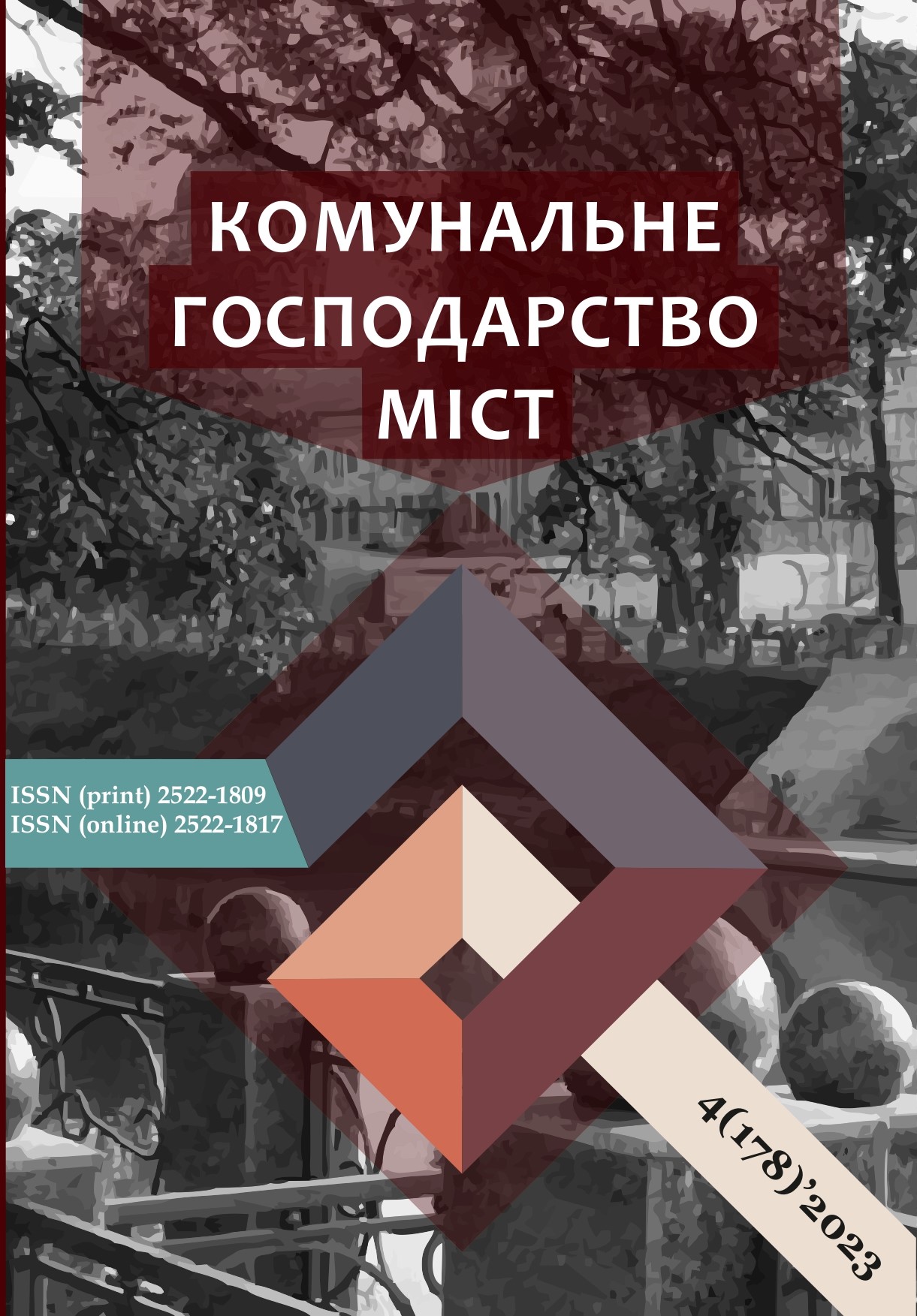RECONSTRUCTION OF THE "UNIFEHT" UNIVERSITY STADIUM DURING THE MILITARY AGGRESSION IN THE CITY OF KHARKIV
DOI:
https://doi.org/10.33042/2522-1809-2023-4-178-79-86Keywords:
sports facilities, multifunctional stadium, reconstructionAbstract
The issue of reconstruction of the destroyed stadium "Unifecht" of Kharkiv National University named after V.N. Karazin in the city of Kharkiv during the military aggression by Russia is the subject of research of this article. Unifekht Stadium was the training base of Olympic fencing champions, it was here that world champion Dmytro Karyuchenko, multiple champion of Ukraine Maksym Hvorost, and world champion Olena Voronina mastered the art of rapier. The article examines the proposal of a draft project for the restoration of the "Unifecht" stadium, carried out by the project organization "Institute "Kharkivproekt" on a charitable basis. "Kharkivproekt" Institute has experience in preparing Ukrainian stadiums for international sports competitions. During the Euro-2012 European Football Championship games in Ukraine and Poland, this organization carried out the reconstruction project of the "Metalist" stadium in Kharkiv. Such experience helps to introduce new functional changes and take into account modern requirements during the reconstruction of the destroyed stadium. European requirements and domestic legislation, norms of design and construction of sports facilities are taken into account, factors affecting the complex reconstruction of the stadium are considered. The article describes the work experience and proposals of Ukrainian architects regarding the restoration of a destroyed object under the conditions of martial law in Ukraine.
References
Terekhov named the approximate damages caused to Kharkiv due to the invasion of the Russian Federation.(2022) Suspielne Novosti. Retrieved from: https://suspilne.media/330296-terehov-nazvav-priblizni-zbitki-harkovu-cerez-vtorgnenna-rf
Ruined victories. How the Russians destroyed sports facilities in Kharkiv. (2022) Kharkiv Today. Retrieved from: https://2day.kh.ua/ua/kharkow/zruynovani-peremohy-yak-rosiyany-nyshchyly-sportyvni-sporudy-v-kharkovi
Black, N., Johnston, D. W., Propper, C., & Shields, M. A. (2019). The effect of school sports facilities on physical activity, health and socioeconomic status in adulthood. Social Science & Medicine, 220, 120-128. https://doi.org/10.1016/j.socscimed.2018.10.025
Fenil, E., Manogaran, G., Vivekananda, G. N., Thanjaivadivel, T., Jeeva, S., & Ahilan, A. (2019). Real time violence detection framework for football stadium comprising of big data analysis and deep learning through bidirectional LSTM. Computer Networks, 151, 191-200. https://doi.org/10.1016/j.comnet.2019.01.028
Woods, C. T., Cripps, A., Hopper, L., & Joyce, C. (2017). A comparison of the physical and anthropometric qualities explanatory of talent in the elite junior Australian football development pathway. Journal of science and medicine in sport, 20(7), 684-688. https://doi.org/10.1016/j.jsams.2016.11.002
Güppert K., Stockhusen K., Dziewas D. ect. (2012) Stadia for the FIFA Worldcup 2014 in Brazil. Bautechnik, 10, 712–717.
King M. (2012) Aquatics Centre, London 2012. Olimpic and Paralympics Games. Bautechnik, 10, 701–711.
Schöne L. (2012) Stadium in blue-construction of «Grand Stade du Havre». Bautechnik, 10, 686–693.
Nixdorf S. (2008) Stadium ATLAS. Berlin, 368.
Güppert K. (2012) Under large roofs – Interdisciplinary design of stadiums. Bautechnik, 10, 694–700.
Pape T., Brückner F., Kloft H. etc. (2012) Outstanding View. Bautechnik, 10, 669–678.
Bienhaus A. (2012) Sustainable Stadium concepts – how to avoid «white elephants». Bautechnik, 10, 679–685.
Gábor Kozma , Klára Czimre, Bence András Bács, Alexandru Ilieş, Christa Sára Pfau, Gheorghe Codruț Bulz and Zoltán Bács (2022) A Special Type of Multifunctional Stadiums: Great Forest Stadium in Debrecen (Hungary). Buildings, 12(12), 2261. https://doi.org/10.3390/buildings12122261
Hao-Yun Chi, Yi-Kai Juan and Shiliang Lu (2022) Comparing BIM-Based XR and Traditional Design Process from Three Perspectives: Aesthetics, Gaze Tracking, and Perceived Usefulness. Buildings 12(10), 1728. https://doi.org/10.3390/buildings12101728
Chub A.N., Kreizer I.I. (2020) Principles of reconstruction of multifunctional stadiums on the example of the Kiev stadium of CSC Armed Forces of Ukraine. IOP Conference Series: Materials Science and Engineering, Volume 907, Innovative Technology in Architecture and Design (ITAD 2020) 21-22 May 2020, Kharkiv, Ukraine, 012066. https://doi.org/10.1088/1757-899X/907/1/012066
Chub O., Kreizer I. (2021) State of reconstruction of Ukrainian multifunctional stadiums after EURO-2012. Linguistics and Culture Review, 5(S4), 1114-1123. https://doi.org/10.21744/lingcure.v5nS4.1750
Guide to Safety at Sports Ground “Green Guide”. Sports Grounds Safety Authority. Retrieved from https://sgsa.org.uk/greenguide/
IAAF Track and Field Facilities Manual (2008), 144. https://athleticssa.org.za/SportsInfo/IAAF-Track-and-Field-Facilities-Manual-2008-Edition-Chapters.pdf
Downloads
Published
How to Cite
Issue
Section
License
The authors who publish in this collection agree with the following terms:
• The authors reserve the right to authorship of their work and give the magazine the right to first publish this work under the terms of license CC BY-NC-ND 4.0 (with the Designation of Authorship - Non-Commercial - Without Derivatives 4.0 International), which allows others to freely distribute the published work with a mandatory reference to the authors of the original work and the first publication of the work in this magazine.
• Authors have the right to make independent extra-exclusive work agreements in the form in which they were published by this magazine (for example, posting work in an electronic repository of an institution or publishing as part of a monograph), provided that the link to the first publication of the work in this journal is maintained. .
• Journal policy allows and encourages the publication of manuscripts on the Internet (for example, in institutions' repositories or on personal websites), both before the publication of this manuscript and during its editorial work, as it contributes to the emergence of productive scientific discussion and positively affects the efficiency and dynamics of the citation of the published work (see The Effect of Open Access).

